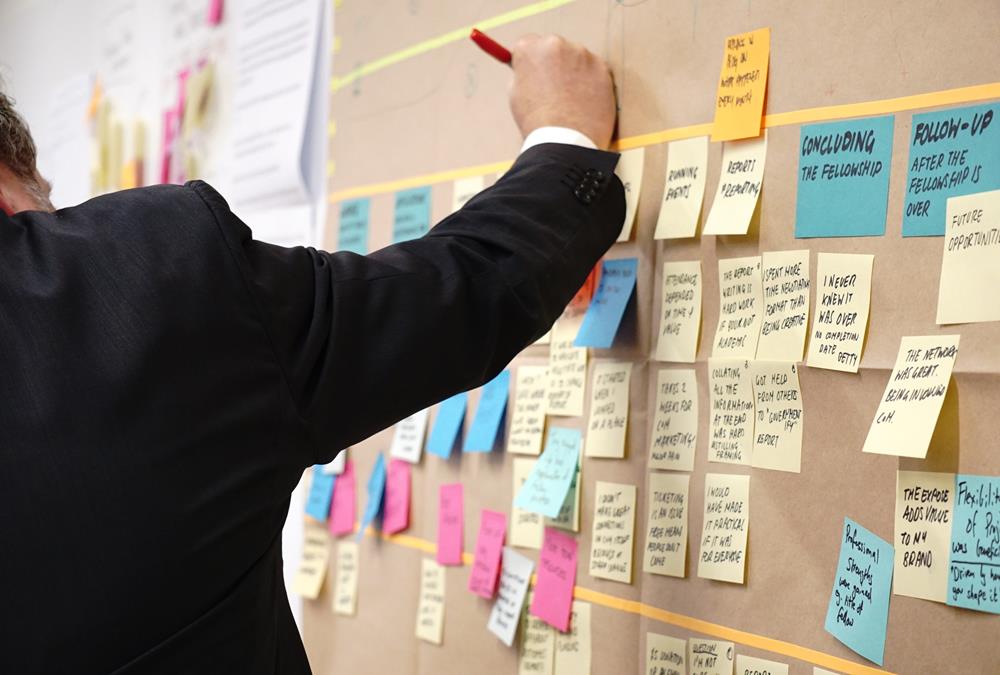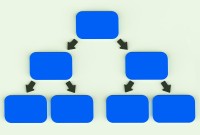- Home
- Business Processes
- Industry Knowledge
- Aerospace Industry
- Automotive Industry
- Banking Domain
- BFSI Industry
- Consumer/ FMCG Industry
- Chemicals Industry
- Engineering & Construction
- Energy Industry
- Education Domain
- Finance Domain
- Hospitality Domain
- Healthcare Industry
- Insurance Domain
- Retail Industry
- Travel and Tourism Domain
- Telecom Industry
- Leadership Skills
- eLearning
- Home
- Industry Knowledge
- Banking Domain
- Case Studies & Challenging Projects in Banking Domain
Case Studies & Challenging Projects in Banking Domain
Some good examples of real business projects with high business impact in banking domain. Helps the learner to understand how to create a well-defined project, with clear deliverables providing great learning experience. Short and precise structured output with good use of project management tools
How to use project management tools and how to manage a banking project?
Given below are some critical success factors:
- Sponsor support is always critical for success
- Regular meetings/communication
- Personal contact & communication
- Presentation skills defined reporting and governance structures
Given below are some challenges faced during banking domain projects:
- Availability of sponsors
- Changing scope & priorities
- Tight timeline & lack of resources
- Conflict of using project management tools vs. driving project for results
- Identifying a real business case
Project Description 1 - Primary banking: Current Account Switching
The current business challenge:
There is very strong resistance to switching current accounts today from your primary banking provider, even amongst the most dissatisfied customers. The current account is one of the most attractive products a bank can offer. It is a source of high margin balances, fees, and commissions, as well as providing key data about the customer's financial and lifestyle to enable banks to cross-sell other products and services. The goal of this project is to identify winning strategies for acquiring more primary banking current accounts.
Project Deliverables
- The project team will review the existing strategies deployed for attracting primary banking Current Account customer and identify any best practices
- Review the global banking market to identify best practices
- Make recommendations for winning strategies to attract more current accounts to include:
- marketing / promotion
- product design
- pricing
- supporting operational processes e.g. account switching services - The focus of the recommendations should be on the core 25-45-year-old market i.e. excluding children, students & graduates
Project Description 2 - Integrated sale of current account and income protection at the PoS
The current business challenge is to optimize/exploit the sales opportunity at the point of current account opening in branches. This requires the integration of the sale of an income protection insurance product into the current account application process. The goal of this project is to provide businesses with a clear roadmap of how to implement this in the branch environment and to quantify the size of the opportunity
Project Deliverables
The project team will
- Document the wing-to-wing branch sales process for the integrated sale of a current account and income protection
- Develop a single, legally compliant application form for both products
- Develop a sales script for use at the branch PoS
- Quantify the financial impact across the 2-3 biggest country opportunities
Project Description 3 - Consumer Credit Collection Approaches
The current business challenge is that the credit risk environment remains hugely challenging and as businesses are working through these challenges, understanding the effectiveness of the different approaches applied in Global Banking and JVs is key to developing a roadmap for the future. The goal of this project is to develop a detailed understanding of the different approaches to collection processes in consumer space, identify best practices and recommend key optimization initiatives
Project Deliverables
The project team will
- Review the bank’s current approach to the collection
- Screen best practices around the globe from other banks
- Compare and contrast the different approaches
- Identify required adjustments to collection approaches
- Define the commercial benefits to any recommendation
Project Description 4 - Credit Card Positioning
The current business challenge is that new credit cards’ have complex properties, so it is hard to communicate to customers. New cards need to compete with generic brands. The goal of this project is to increase brand awareness and position new offering as a generic brand in its category and to create new product attributes and/or sales approaches to sell it to right customers
Project Deliverables
The project team will
- Analyze the current positioning of existing cards
- Review the global approaches for new products
- Review the global approaches for generic brands
- Make recommendations for positioning a new card in the context of;
- marketing/promotion strategies and tactics
- product attributes
- profitability

Given below are some other Project Ideas undertaken by various banking institutions in the past to optimize their operational models.
1. Capturing unbanked transactions into the banking system
Still, some payments are mostly made by cash and people don’t use the banking system (eg: some salary payments, apartment utility fees, cleaning lady fees, some micropayments...etc.). Explore some areas with high potential where cash is still widely used and create ideas to capture these transactions into the banking system. Think about different product options (with or without using plastic cards) and business model propositions
2. Efficient Contact Management for Increased Customer Satisfaction
Improving A New Contact Management System For Increased Customer Satisfaction and Operational Efficiency
3. Enhancement of the performance reports
Improving the reporting process (drawing down the manual work, making the reports as automatically generated as possible -access based, etc.-) and covering most of the efficacious information can be considered as the main enhancements. Cutting down the time spent on accomplishing the reports will also be a plus for the project.
4. Local Currency Financing
Analyzing the viability of local currency long term loan facilities for project and acquisition finance transactions to improve the “bankability” of the projects in the current global problems.
5. Exceptionally Straight-forward Customer Experience
Customer Experience –implementing simplification and enhancing customer experience in acquisition, sales, and service across the whole Bank
6. Branch Network Optimization
To convert Branches to true Service & Salespoints. Process/product optimization, centralized collections, reporting system optimization; employee optimization; improvements in IT systems; rental optimization; changes in employee responsibilities (training, certification, etc.)
7. Product Launch Strategy
The market for banking products is experiencing the toughest competition. There are several banks on the market with almost similar business models. It is critical to get a learning advantage out of recent competitor’s launches to complement the bank’s own strategy development. Define and analyze key success/failure factors from recent competitors launches covering such areas as Brand, Products and Sales strategies
Banking Domain Knowledge - Resources
Related Links
You May Also Like
-
Definition of Bank: Meaning of the term Bank and the Business of Banking
What do we mean by the word bank? How did the word bank originate? What is the most simple and concise definition of a bank that explains the fundamentals of the banking process? Does the definition of banking vary from country to country? What are the key differentiators between any other business and a Bank? Get answers to all these questions and explore the basics of bank and banking as an industry.
-
History of Banking: Evolution of Banking as an Industry
Banking is one of the oldest industries and banking in the form that we know of began at about 2000BC of the ancient world. It started with merchants making grain loans to farmers and traders while carrying goods between cities. Since then, the banking industry has evolved from a simplistic barter system and gift economies of earlier times to modern complex, globalized, technology-driven, and internet-based e-banking model. In this article, we will take you through the major events and developments in the history of the banking industry.
-
History of Banking: Famous Banks from the Past
Seven hundred years ago a bank was established in Venice, which made transactions resembling modern banking. In 1407, another bank was founded in Italy under the name of Banco di San Giorgio which was one of the oldest chartered banks in Europe. Sveriges Riksbank (Riksbanken), is the central bank of Sweden and the world's oldest central bank. The Bank of England is the second oldest central bank in the world, and most modern central banks have been based on that model. Let us explore some interesting events as we learn more about these early banking institutions.
-
History of Banking: The Gold Standard & Fractional Reserve Banking
Gold has always been considered as a safe economic investment and treated like a currency. All of the economically advanced countries of the world were on the gold standard for a relatively brief time. Under a gold standard, the value of a unit of currency, such as a dollar, is defined in terms of a fixed weight of gold and banknotes or other paper money are convertible into gold accordingly. Explore the fascinating history of the gold standard through the lens of history and also learn why banks hold back a certain fraction of deposits as reserves.
-
Overview of Banking Industry: The Industry Basics
Banks play a key role in the entire financial system by mobilizing deposits from households spread across the nation and making these funds available for investment, either by lending or buying securities. Today the banking industry has become an integral part of any nation’s economic progress and is critical for the financial wellbeing of individuals, businesses, nations, and the entire globe. In this article, we will provide an overview of key industry concepts, main sectors, and key aspects of the banking industry’s business model and trends.
-
Banking Sector, Segments & It's Classifications
The banking industry players deal in a variety of products from savings accounts to loans and mortgages, offer various services from check cashing to underwriting, caters to different types of customers from individuals to large corporates, serve diverse geographies from rural villages to cross-border operations. Thus the banking industry is made up of several types of banks, with their own objectives, roles, and functions. In this article, we will explore the various sectors, segments, and classifications of banking based on parameters like products, customers, types, etc.
-
Type of Banks: Different Types of Banks in India & their Functions
This article explains the banking structure in India and how different banks are classified as per RBI Norms. The Indian banking industry has been divided into two parts, organized and unorganized sectors. The organized sector consists of Reserve Bank of India, Commercial Banks and Co-operative Banks, and Specialized Financial Institutions (IDBI, ICICI, IFC, etc.). The unorganized sector, which is not homogeneous, is largely made up of money lenders and indigenous bankers. Learn what we mean by nationalized banks, scheduled banks, public sector banks, private banks, and foreign banks.
-
Types of Banks: Different Banks & their Classifications (Global)
The banking industry caters to various sections of society thus the focus of banking becomes varied, catering to the diverse needs of clients through different products, services, and methods. To meet this, we need distinctive kinds of banks addressing complex business & social needs. In this article, we will explain various types of banking institutions ranging from retail banks, commercial banks, co-operative banks, investment banks, central banks to various other types of specialized banks.
-
Banking Operations: Understanding Various Transactions & Activities
Banks perform a variety of operations ranging from basic or primary functions like day to day transactions at a branch to others that maybe the agency or general utility services in nature. The transactions that are incidental to revenue/sales or sustaining the business are an important element of the banking industry value chain. In this article, we will look at the key operations performed in the course of banking.
-
Banking Industry Business Model - Understanding How the Banking System Works
Banks are commercial profitable institutions and need to increase their business, grow their revenue, and provide returns to their owners. Unlike other stores and shops, banks are providing services rather than selling their products. Learn how banks get their funds and how they make money on services. Read more to learn how the banks earn their profit!
Explore Our Free Training Articles or
Sign Up to Start With Our eLearning Courses

About Us
Learning
© 2023 TechnoFunc, All Rights Reserved










